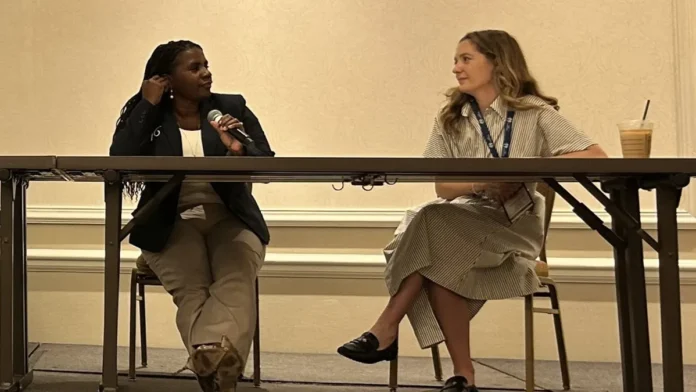NASHVILLE—With special education costs rising as more students are identified for services, school districts are grappling with budget constraints and tough decisions regarding potential cuts. Maggie Cicco, a research fellow at Georgetown University’s Edunomics Lab, emphasized the need for school districts to carefully assess their special education spending. Speaking at the Association of School Business Officials International annual conference, Cicco highlighted how the “maintenance of effort” provision requires consistent year-over-year spending, raising the question of whether these increases are delivering value.
From the 2012-13 to 2022-23 school years, the number of special education students nationwide increased from 6.4 million to 7.5 million, now representing 15% of public school enrollment, according to the National Center for Education Statistics. Despite this growth, Cicco noted that identifying more students for special education services does not always lead to improved academic outcomes. For example, in New Mexico, where 7.5% of students were diagnosed with learning disabilities, reading scores remained low.
A significant factor driving special education costs is increased staffing. Since 2007, the number of special education teachers rose 12%, while specialist and paraprofessional staffing surged 35% and 37%, respectively. However, Edunomics Lab’s analysis found that higher staffing levels do not necessarily result in better outcomes. For instance, Florida, with fewer special education staff, outperformed many states in reading scores for special education students.
Ann Williams, deputy superintendent at U-46 School District in Illinois, added that hiring additional support staff such as family engagement liaisons and social workers has significantly driven up costs.
Cicco urged district leaders to scrutinize their special education budgets by setting clear outcome expectations for budget increases and monitoring whether those investments are achieving desired results. Implementing annual evaluations, like those at U-46, may help districts track the effectiveness of their special education spending and make informed adjustments.











